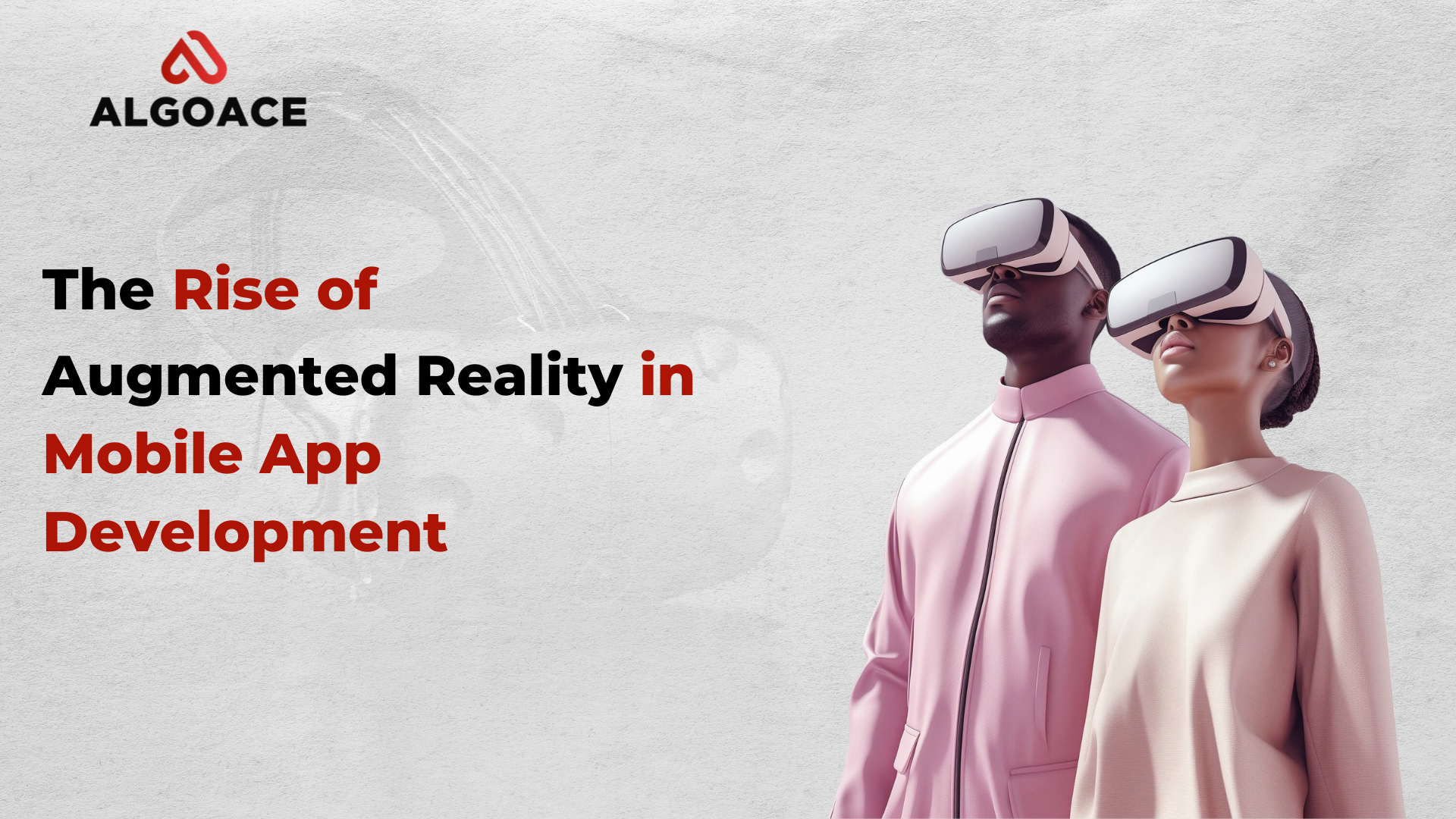
Augmented reality (AR) has arisen as a weighty innovation that overlays computerized data and virtual items onto this present reality, improving client encounters through intuitive and vivid components. This groundbreaking innovation has seen critical development and reception across different ventures, changing areas like gaming, retail, instruction, and medical care, and the sky is the limit from there. AR has reshaped these businesses as well as impacted progressions in mobile app development by coordinating virtual components consistently into genuine conditions. This article dives into the development of AR, its ongoing applications, and the future potential that it holds.
Evolution of Augmented Reality
Augmented reality follows its starting points back to the beginning of registering, with ideas arising as soon as the 1960s. Ivan Sutherland’s “Blade of Damocles” denoted a significant second, exhibiting a simple type of AR through a head-mounted show framework. In any case, it was only after the progression of PC designs and the expansion of cell phones that AR started to develop into a useful and open innovation.
The Role of Smartphones
The rise of smartphones, especially with the presentation of strong processors, high-goal cameras, and high-level sensors, catalyzed the far and wide reception of AR. Organizations like Apple and Google assumed essential parts by giving AR development systems, for example, ARKit and ARCore, which enabled engineers, remembering those for the software development company area, to make AR encounters for iOS and Android gadgets individually. This democratization of AR development ignited a blast of applications across different spaces.
Current Applications of Augmented Reality in Mobile Apps
Augmented reality (AR) in mobile apps has upset different ventures, offering vivid and intelligent encounters that mix virtual components with this present reality.
Gaming and Entertainment
AR has revolutionized the gaming and entertainment industries by blending virtual elements with real-world environments. Games like Pokémon GO, developed by Niantic Labs, became global phenomena by allowing players to hunt and capture virtual creatures overlaid onto their physical surroundings. This fusion of AR with location-based gaming not only garnered massive popularity but also demonstrated the potential for immersive gameplay experiences.
Retail and E-Commerce
In the domain of retail and online business, AR has re-imagined how customers cooperate with items and pursue buying choices. Apps like IKEA Spot empower clients to envision furniture and home stylistic layout things in their residing spaces through their cell phone cameras. This virtual attempt before-you-purchase approach upgrades buyer certainty and diminishes the probability of profits, accordingly further developing by and large shopping encounters.
Education and Training
AR is changing training by offering intuitive and connecting with growth opportunities. Instructive apps influence AR to reproduce verifiable occasions, investigate logical ideas and direct virtual tests in a controlled climate. Stages like Google Campaigns work with virtual field excursions to areas all over the planet, improving homeroom learning with a vivid substance that upgrades understudy commitment and cognizance.
Healthcare and Medical Training
In medical care, AR is altering clinical preparation and patient consideration. Specialists use AR to imagine patient life structures in three aspects during methodology, improving accuracy and diminishing dangers. Clinical understudies benefit from AR recreations that reenact careful situations and practice complex methodology in a reasonable yet safe climate. AR additionally helps with patient instruction by envisioning ailments and treatment choices, working on persistent comprehension and consistence.
Navigation and Travel
AR-fueled route apps furnish clients with ongoing data overlaid onto their environmental factors, making it simpler to explore new conditions. Apps like Google Guides coordinate AR to show road names, bearings, and focal points straightforwardly on the client’s cell phone screen, improving route precision and ease of use. Local escorts influence AR to give authentic data and virtual voyages through milestones, enhancing the movement experience with context oriented data and intuitive substance.
Future Trends and Innovations in Augmented Reality
Looking ahead, the future of augmented reality (AR) promises groundbreaking advancements that will redefine digital interaction and immersive experiences.
Advancements in AR Hardware
The fate of AR innovation is intently attached to headways in equipment capacities. The development of lightweight and ergonomic AR glasses, for example, those supposed to be in development by tech monsters like Apple and Microsoft, vows to convey more vivid and consistent AR encounters. These wearable gadgets are ready to rethink how clients collaborate with computerized content in the actual world, opening up additional opportunities for applications across ventures.
Integration with Artificial Intelligence (AI)
The combination of AR with man-made reasoning (computer based intelligence) addresses one more outskirts of development. Man-made intelligence fueled AR applications can improve client associations by giving continuous item acknowledgment, language interpretation, and customized suggestions in view of client inclinations and ways of behaving. This cooperative energy among AR and man-made intelligence not just works on the exactness and importance of AR encounters yet additionally makes them more instinctive and receptive to client needs.
Enhanced User Interfaces and Interaction Models
Future AR applications are supposed to include progressed UIs and communication models that focus on convenience and availability. Innovations, for example, hand motion acknowledgment, eye-following, and voice orders will empower clients to communicate with AR content normally and consistently. These advancements intend to overcome any barrier among computerized and actual real factors, offering natural and vivid encounters that upgrade efficiency, amusement, and regular errands.
Industry-Specific Applications
AR’s true capacity reaches out past purchaser confronting applications to industry-explicit arrangements that address exceptional difficulties and necessities. In assembling and strategies, AR upgrades functional proficiency by giving constant visual direction to gathering assignments, stock administration, and upkeep methodology. The development business benefits from AR by overlaying building plans and advanced models onto actual building locales, working with project representation and coordinated effort among partners.
Challenges and Considerations
Navigating the complexities of augmented reality (AR) technology presents several challenges and considerations that warrant careful attention.
Technical Challenges
- Guaranteeing exact spatial mapping and arrangement of advanced overlays with true items.
- Streamlining execution to convey consistent encounters across various gadgets.
- Resolving issues connected with battery utilization and gadget overheating during delayed use.
Privacy and Security Concerns
- Executing powerful information insurance measures to shield client data.
- Guaranteeing consistency with information security guidelines.
- Instructing clients about the likely dangers and advantages of AR innovation.
User Acceptance and Accessibility
- Planning AR applications with comprehensive elements for different client needs.
- Improving availability with customizable text sizes, variety contrast choices, and backing for assistive advancements.
- Cultivating trust and empowering dependable utilization of AR applications.
Conclusion
Augmented reality has developed from a specialty innovation to a groundbreaking power reshaping how we communicate with computerized content and the actual world. AR upgrades diversion, training, medical care, retail, route, and different ventures with its capacity to overlay virtual data onto certifiable conditions. As progressions in equipment, artificial intelligence joining, and UIs keep on driving advancement, the eventual fate of AR holds tremendous potential for making vivid and intelligent encounters that further develop efficiency, imagination, and personal satisfaction.
As organizations and designers investigate the conceivable outcomes of AR innovation, tending to specialized difficulties, guaranteeing protection and security, and improving client openness will be pivotal for cultivating far-reaching reception and amplifying the advantages of AR applications. By embracing AR’s capacities and incorporating them into different applications and businesses, we can bridle its extraordinary influence to make a more associated, informed, and improved computerized future.





0 Comments